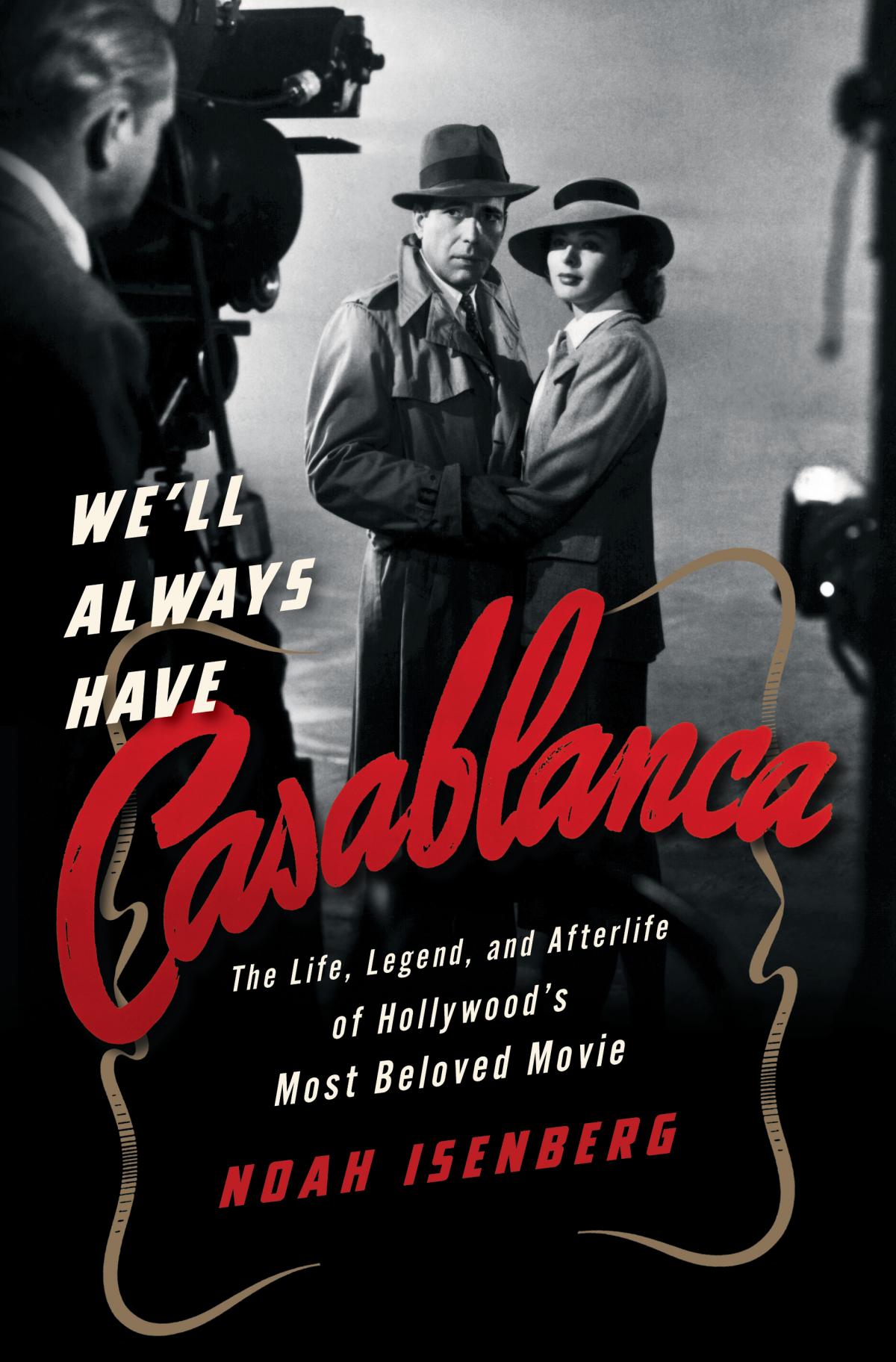When Casablanca premiered on Thanksgiving Day 1942, in the middle of the war and just two weeks after the city of Casablanca itself had surrendered to General Patton’s troops, even the most optimistic of Tinseltown dreamers could hardly have predicted that it would go on to become perhaps the most beloved of all Hollywood movies. And yet this “picture that makes the spine tingle and the heart take a leap,” as the New York Times critic Bosley Crowther wrote at the time, would go on not only to win Oscars for Best Picture, Best Director, and Best Adapted Screenplay, but to enjoy more revival screenings than any other film in the history of cinema. Seventy years after the film’s release, the Academy of Motion Pictures selected Casablanca to inaugurate its public “Oscar Outdoors” series at its new open-air theater in the heart of Hollywood. As Umberto Eco once said, Casablanca is “not one movie; it is ‘movies.’”
Like so many other fans, I was reminded of the movie’s indelible place in our cultural lexicon in the spring of 2016, when news arrived that cast member Madeleine Lebeau had passed away in a small Spanish town on the Costa del Sol. Not yet 20 when the film was made, the French-born Lebeau turned in a spirited performance as Yvonne, the young woman who gets snubbed by Humphrey Bogart in the film’s first act, only to return defiantly to Rick’s Café Américain—shifting her allegiances with the speed of a Vichy opportunist—on the arm of a Nazi officer. She ultimately reveals her true colors by singing a vigorous rendition of “La Marseillaise” during the pivotal scene in which the café patrons sing the French national anthem with increasing fervor to drown out the competing Nazi chorus of “Die Wacht am Rhein.” Tears stream down her trembling cheeks, shot in luminous close-up, as she cries out “Vive la France!” and “Vive la démocratie!”
“I think it was the most moving patriotic scene ever played in any picture,” remarked Russian-born actor Leonid Kinskey, who played Sascha the barman, three decades after the film was released. Without Yvonne, without her inimitable voice and her tears, the scene is unthinkable.
As it turns out, Lebeau herself had fled Nazi-engulfed Europe with her Jewish husband, Marcel Dalio, who plays Emil the croupier at Rick’s Café and who was already famous in Europe for his winning performances in Jean Renoir’s La Grande Illusion (Grand Illusion, 1937) and La Règle du jeu (Rules of the Game, 1939). In an ugly turn, close-ups of Dalio, taken from those films, were appropriated on anti-Semitic Vichy propaganda placards. Shortly before the German invasion of Paris, Dalio and Lebeau made their way to Lisbon, that prized destination for languishing refugees in Casablanca, and from there, using forged visas, secured passage on the S.S. Quanza, a Portuguese ship carrying hundreds of émigrés to the New World. Landing in Mexico, they were able to get temporary Canadian visas and, with them in hand, crossed the border to California and eventually to the back lot at Warner Bros.
Over the course of her extended career, from her uncredited debut in G. W. Pabst’s Jeunes filles en détresse (Young Girls in Trouble, 1939) up to her late role as Madeleine, a French actress and former lover of Marcello Mastroianni’s character in Fellini’s 8 ½ (1963), Lebeau brought a certain zeal and commitment to her performances. Although later in life she is said to have regretted that she didn’t have more lines and more screen time in Casablanca, she surely left her mark on the picture. As Captain Renault (played by Claude Rains) wittily observes of Yvonne, when she returns to Rick’s: “In her own way she may constitute an entire second front.”
In the obituaries published in newspapers and posted on websites across the globe, Lebeau’s age was given as 92, and she was widely presumed to have been the last surviving cast member. A striking shot from the “Marseillaise” scene accompanied many of the death notices. “She was a free woman who lived by her own rules, totally inhabiting the roles entrusted to her by leading directors,” the French culture minister, Audrey Azoulay, said of Lebeau in an official announcement. “She will forever be the face of the French resistance.”
That sentiment encapsulates the magic of Casablanca: A scene from a film that was first brought to life in the dream factories of Southern California in the summer of 1942 is still, some seven and a half decades later, considered representative of a real political and historical epoch. During research for my book, I spoke with dozens of people—filmmakers and family members, film critics and fans—who, like Minister Azoulay, felt that a specific scene or a specific character, or even the film as a whole, had come to mean something much larger with each passing decade.
Casablanca is not without its imperfections. There are undeniably corny lines and a healthy dose of Hollywood “hokum,” in the parlance of the day. But its spectacular achievement, whether it’s the result of the “genius of the system,” as the great French critic André Bazin once termed it, or the good fortune of historical timing, prodigious talent, and a host of factors that often elude categorization, remains indisputable. As Paul Whitington observed in the Belfast Telegraph weeks after Lebeau’s death, “Maybe there are better films than Casablanca, but there are probably none better loved.” It flickers, as bravely and beautifully as ever, in the glorious black-and-white shadows of our imagination, 75 years after its release.




